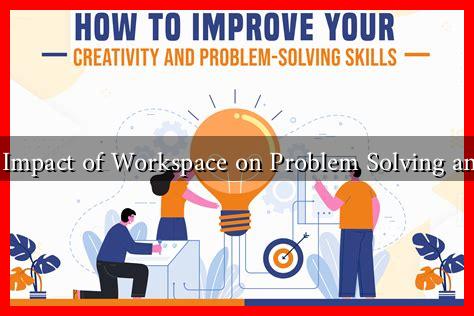-
Table of Contents
What Is the Impact of Workspace on Problem Solving and Creativity
In today’s fast-paced and ever-evolving work environment, the design and layout of a workspace play a crucial role in influencing employee productivity, creativity, and problem-solving capabilities. As organizations strive to foster innovation and collaboration, understanding the impact of workspace on these cognitive processes becomes essential. This article delves into how different workspace designs affect problem-solving and creativity, supported by research, case studies, and practical examples.
The Psychology of Space
The physical environment in which individuals work can significantly affect their mental state and cognitive functions. According to environmental psychology, various elements of a workspace—such as lighting, color, layout, and noise levels—can either enhance or hinder creativity and problem-solving abilities.
- Lighting: Natural light has been shown to improve mood and energy levels, which can lead to enhanced creativity. A study by the Harvard Business School found that employees with access to natural light reported a 15% increase in productivity.
- Color: Colors can evoke different emotions and responses. For instance, blue is often associated with calmness and focus, while yellow can stimulate creativity. Research indicates that the right color scheme can lead to improved problem-solving skills.
- Layout: Open-plan offices encourage collaboration but can also lead to distractions. Conversely, private spaces can enhance focus but may limit spontaneous interactions. Finding a balance is key.
Case Studies: Successful Workspace Designs
Several organizations have successfully redesigned their workspaces to enhance creativity and problem-solving. Here are a few notable examples:
- Google: Known for its innovative work environment, Google incorporates open spaces, relaxation areas, and collaborative zones. This design encourages employees to brainstorm and share ideas freely, leading to groundbreaking solutions.
- Airbnb: The company’s headquarters features a unique design that reflects its brand ethos. The workspace includes communal areas that promote interaction among employees, fostering a culture of creativity and collaboration.
- Steelcase: A leader in office furniture, Steelcase conducted research showing that employees who work in well-designed spaces are 12% more productive. Their studies emphasize the importance of adaptable workspaces that cater to various tasks and preferences.
The Role of Technology in Workspace Design
Advancements in technology have also transformed how workspaces are designed. The integration of digital tools and smart technologies can enhance collaboration and creativity. For instance:
- Virtual Reality (VR): Companies are using VR to create immersive environments for brainstorming sessions, allowing teams to visualize ideas in a three-dimensional space.
- Collaboration Tools: Platforms like Slack and Microsoft Teams facilitate communication and idea sharing, regardless of physical location, thus enhancing problem-solving capabilities.
- Smart Desks: Adjustable desks that allow employees to switch between sitting and standing can improve focus and energy levels, contributing to better problem-solving outcomes.
Challenges and Considerations
While the benefits of a well-designed workspace are clear, there are challenges to consider:
- Distractions: Open-plan offices can lead to noise and interruptions, which may hinder concentration and creativity.
- Personal Preferences: Not all employees thrive in the same environment. Some may prefer quiet, private spaces, while others may excel in collaborative settings.
- Cost: Redesigning a workspace can be expensive, and organizations must weigh the potential benefits against the costs involved.
Conclusion
The impact of workspace on problem-solving and creativity is profound and multifaceted. By understanding the psychological effects of space, leveraging technology, and learning from successful case studies, organizations can create environments that foster innovation and collaboration. As the workplace continues to evolve, prioritizing thoughtful design will be essential for enhancing employee performance and driving organizational success. Ultimately, a well-designed workspace is not just about aesthetics; it is a strategic investment in the future of work.

